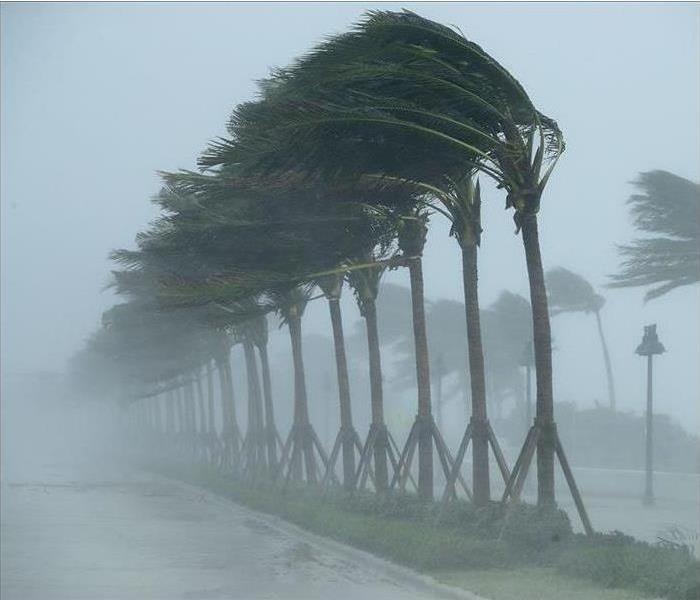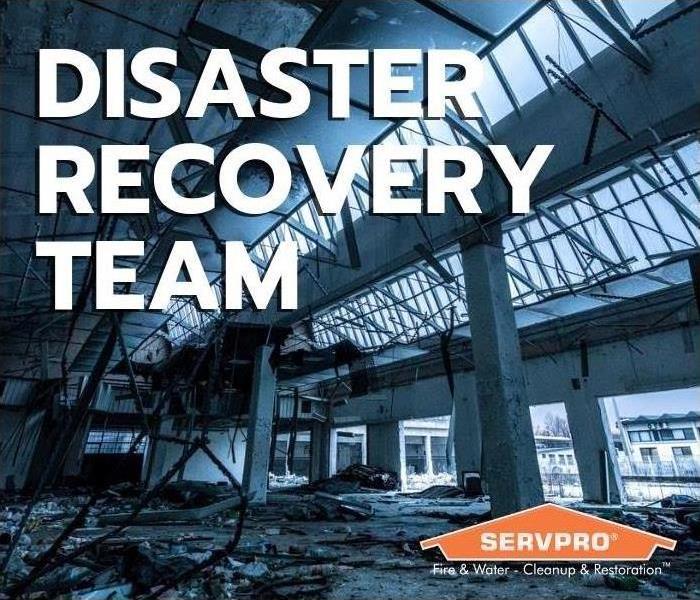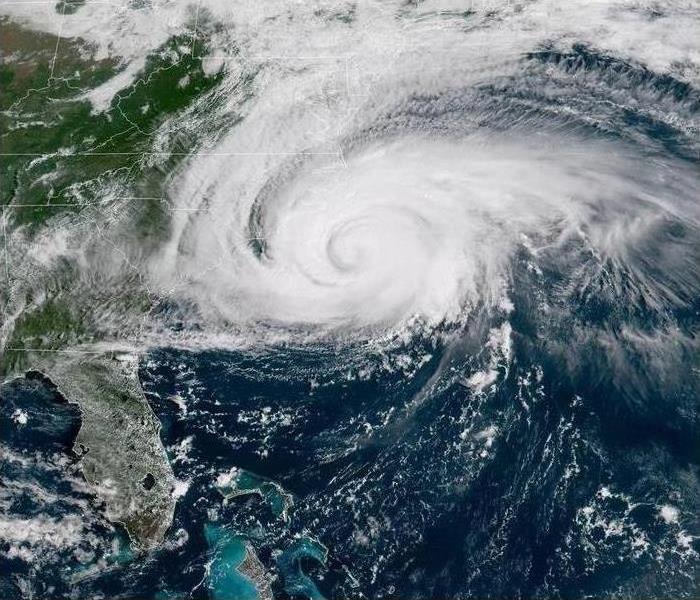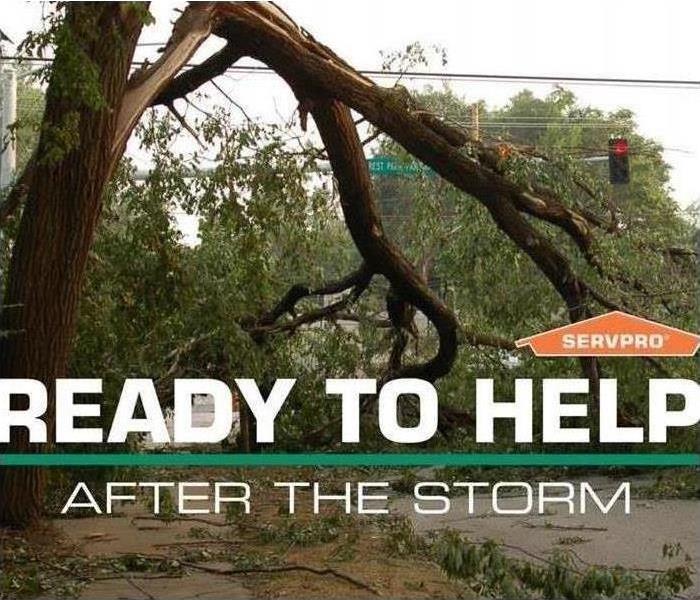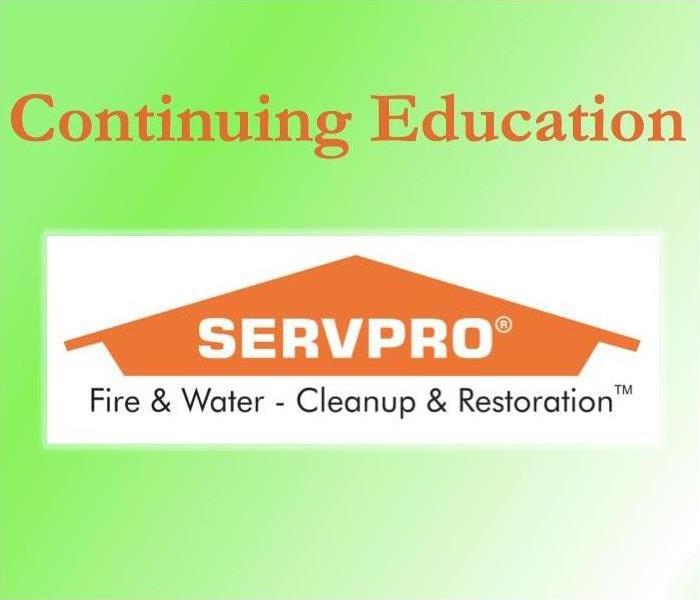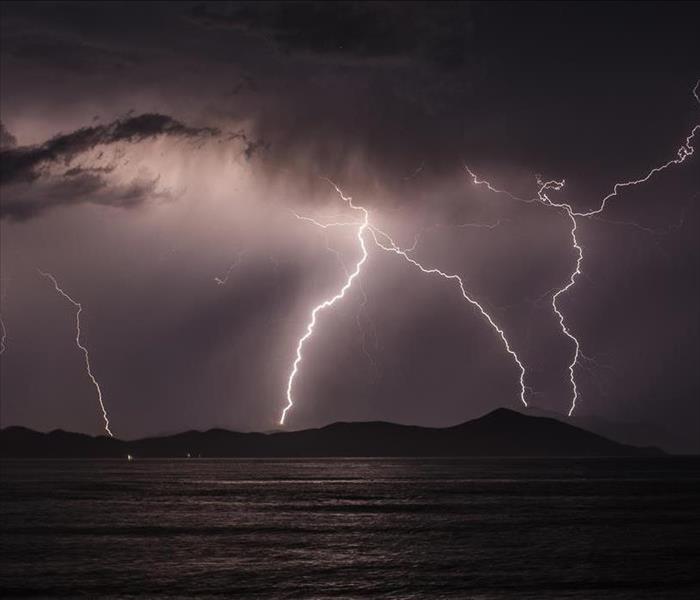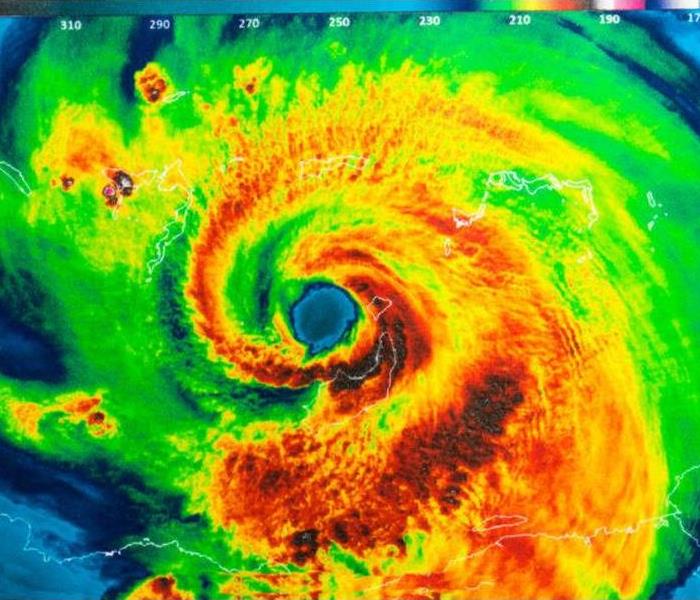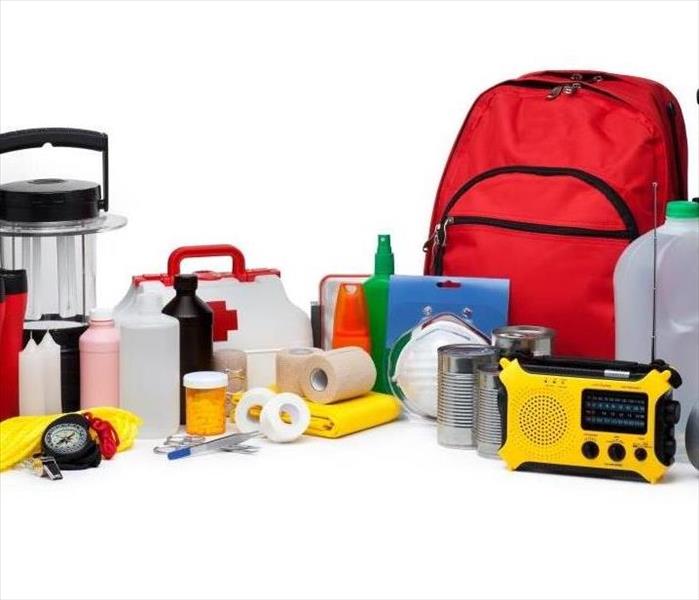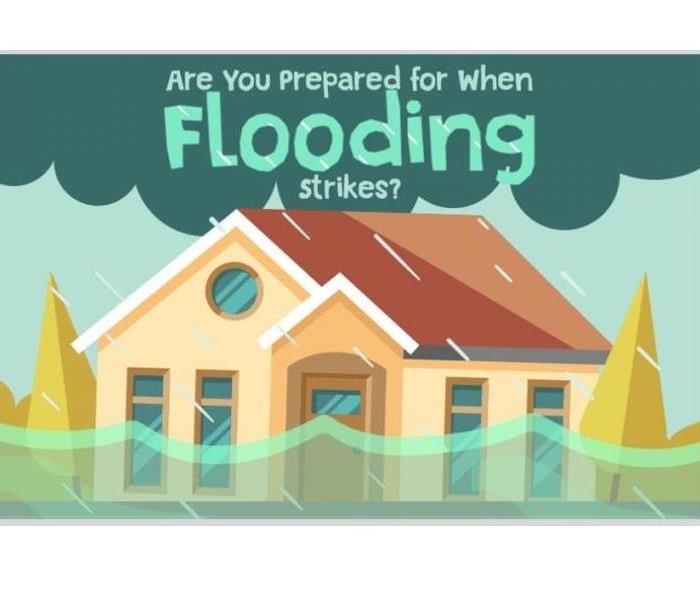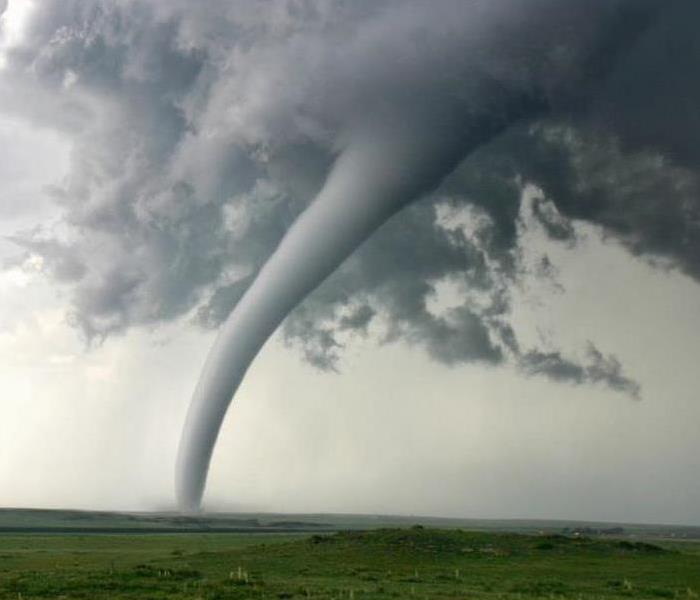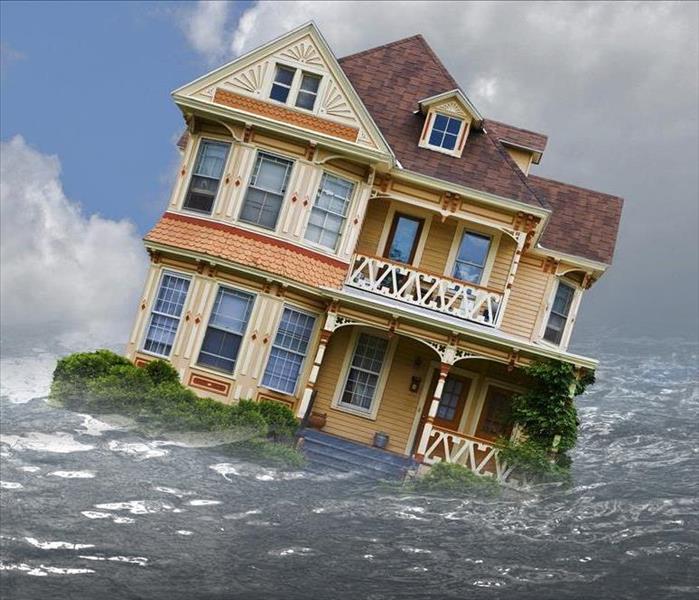Recent Storm Damage Posts
Making the Right Choice for Disaster Restoration Services
9/18/2023 (Permalink)
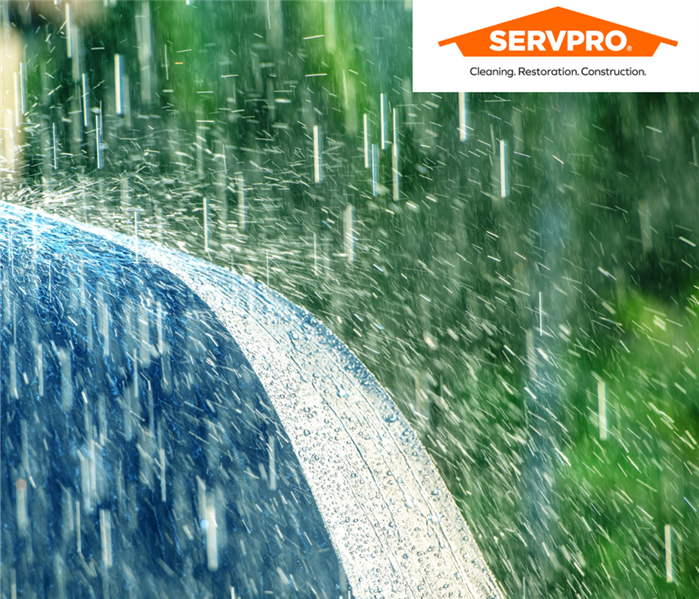 SERVPRO is the right choice to help with storm damage in Houston, TX
SERVPRO is the right choice to help with storm damage in Houston, TX
Are you Choosing the Right Restoration Company?
Dealing with the aftermath of a storm can be overwhelming. You might find yourself in a situation where you're unsure of which restoration company to choose. While your insurance company might suggest a restoration service, it's important to remember that you have the freedom to make your own choice.
When looking for a reliable and respected restoration company, consider these three key factors:
Local Expertise and Licensing: In the wake of a natural disaster, many out-of-state companies may flock to your area, claiming to be experts in restoration. However, it's often wiser to opt for a local company with deep roots in your community. Look for a team that boasts years of experience in the area and can provide local customer referrals. Additionally, make sure they are fully licensed and certified, demonstrating their commitment to meeting the necessary requirements for restoration work.
Exceptional Customer Service: During times of crisis, having a compassionate service provider by your side is invaluable. You need someone who can guide you through the restoration process, clearly outline your options, and effectively coordinate with your insurance company. Start by perusing customer reviews to gauge a company's commitment to customer care. At SERVPRO, we take pride in our numerous 5-star reviews, a testament to our dedication to serving our clients with compassion and professionalism.
IICRC Certification: The IICRC (Institute of Inspection, Cleaning and Restoration Certification) is the foremost authority in the restoration industry. When a company carries an IICRC certification, it signifies that they have undergone rigorous training and testing, ensuring that they provide the highest quality cleaning and restoration services.
When disaster strikes, you can trust our team at SERVPRO of Spring/Tomball to swiftly and efficiently repair the damage. As a locally owned and operated business, we've been serving the restoration and remodeling needs of the Houston community for years. Our unwavering commitment to exceptional customer service and top-quality work has earned us a reputation as one of the fastest-growing restoration companies in the country.
We are proud to hold IICRC certification and are licensed to provide emergency 24/7 service. When you're faced with a crisis, rely on the experienced and compassionate experts at SERVPRO to take care of you and your property. For immediate assistance, please call us at 281-374-6454.
How to Prepare for Winter Storms & Frozen Pipes
1/27/2022 (Permalink)
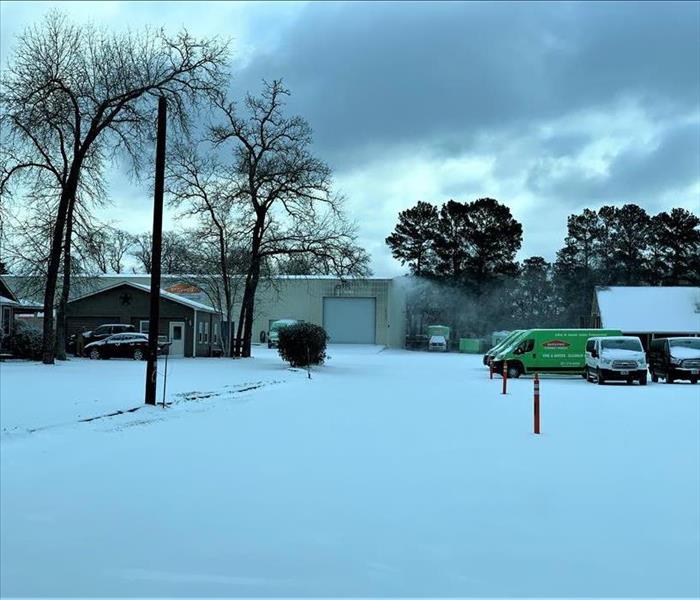 SERVPRO of Spring/ Tomball
SERVPRO of Spring/ Tomball
The winter season is here and snow and ice can create major issues for you and your home. As we prepare to support you, it’s best for every business and homeowner to review potentially problematic issues.
Whether it’s snow, ice, heating, thawing frozen pipes or unforeseen accidents, the combination of certain elements can destroy your property. Most people will know to be aware of frozen pipes in the house, but other issues may arise. Ice on your roof can prevent proper drainage, if heat isn’t evenly distributed, some areas may freeze, and water in frozen pipes will freeze causing secondary damage to other appliances or household systems.
Here are three preemptive ways to check in on your property.
- Insulate Your Roof
The best ice dam prevention solution is to properly insulate your roof. Heat escapes through ceilings and rises to the roof where it warms the wood and shingles above. To prevent this, check the depth of your insulation.
Anything less than 8 inches is usually not enough to prevent heat from escaping, and it's important to use foam or caulk to stop air leaks. This will not only stop roof issues, but it will also save you money on your energy bill.
- Remove the Buildup
If you notice a large amount of snow gathering on your roof, you might want to consider eliminating it. Houses that have poor ventilation can also have poor distribution of heat. By removing the snow with a push broom or shovel, you can clear any potential problem areas.
- Create Channels in the Ice
Ice dams can force water into your home through the attic. You can stop this by creating channels in the ice and draining the water into the gutters. Use a hose with warm water and melt the lower edge of the ridge. This solution is a temporary fix but could prevent a large amount of winter storm damage.
Winter storms will always be unpredictable and damaging in one way or another. Our only working defense is to focus on potentially preventable tactics.
You do not need to figure out how to prevent pipes from freezing or fix frozen pipes on your own. Feel free to reach out to us at SERVPRO of Spring/ Tomball for additional information on how to protect your home, we're always here to help!
What to know when there's a Tornado Risk in Texas
7/25/2021 (Permalink)
 SERVPRO of Spring/ Tomball
SERVPRO of Spring/ Tomball
Tornadoes can strike without warning and destroy a community in seconds. A tornado is a rotating column of air that occurs during a thunderstorm and can have wind speeds that reach up to 300mph. Because wind is invisible, it is hard to see a tornado unless it forms a condensation funnel made up of water droplets, dust, and debris.
Know The Signs And Be Prepared
Before a tornado warning is issued for your area, here are some things to keep in mind.
- Know the signs of a tornado, a rotating funnel-shaped cloud, an approaching cloud of debris, or a loud roar similar to a freight train. Many people have reported that when a tornado is approaching, the sound they hear is like a train barreling down the tracks.
- Know your community's warning system and understand the difference between a tornado watch and warning through the national weather service.
- A warning means a tornado is already occurring or will occur soon and to go to a safe place immediately. A watch means conditions are favorable, and a tornado is possible.
- Listen to NOAA Weather Radio or your local news channel for current emergency information and instructions. With advanced technology in weather forecasting, meteorologists can pinpoint circling winds and inform the public like never before.
Assemble An Emergency Kit
Assemble an emergency kit for you and your family. Put these items in zip lock bags and store them all in a plastic tub. Many different times can make up a kit, but here are a few of the basics to keep in mind.
It's recommended to have one gallon of water per person for at least three days, drinking and sanitation. At least a three day supply of non-perishable food per person. Battery-powered or hand-crank radio and a NOAA Weather Radio with tone alert. A flashlight, first aid kit, and extra batteries are all essential to keep in your kit.
Where To Go
Preparation is essential, and something we should all take time to do. It's a great idea to plan ahead of a disaster and chose a place where family members can gather if a tornado is headed your way.
It could be your basement or storm cellar, a center hallway, bathroom, or closet on the lowest level. Put as many walls as possible between you and the outside.
Get under a sturdy table and use your arms to protect your head and neck. Always remember to stay away from windows, doors, and outside walls.
Understanding The Risk
Know your area's tornado risk. In the U.S., the Midwest and the Southeast have a higher risk for tornadoes. If you lived on the west coast, you probably would read about mudslides and wildfires preparedness rather than thunderstorms and tornadoes.
The infamous Tornado Alley, Texas, Oklahoma, Kansas, and Nebraska, still leads in the number of tornadoes. It's crucial to plan ahead to help keep your family safe.
If You Have Storm Or Tornado Damage, Call your SERVPRO Franchise Professional
SERVPRO of Spring/ Tomball, your SERVPRO of Houston, is here to help as your water damage company for Texas. We offer emergency fire and water services as your Texas water damage restoration company for homes or businesses after a storm has passed. Some of these water damage restoration services include roof tarping, basement flooding, water removal, covering broken windows, water damage repair, sump pump, structure dry out, and any water damage restoration in Tomball, TX.
We're always available 24/7/365, even on holidays, faster to any size disaster. You can expect an immediate response day or night (281) 374-6454.
Flooding and Safety Tips
4/14/2021 (Permalink)
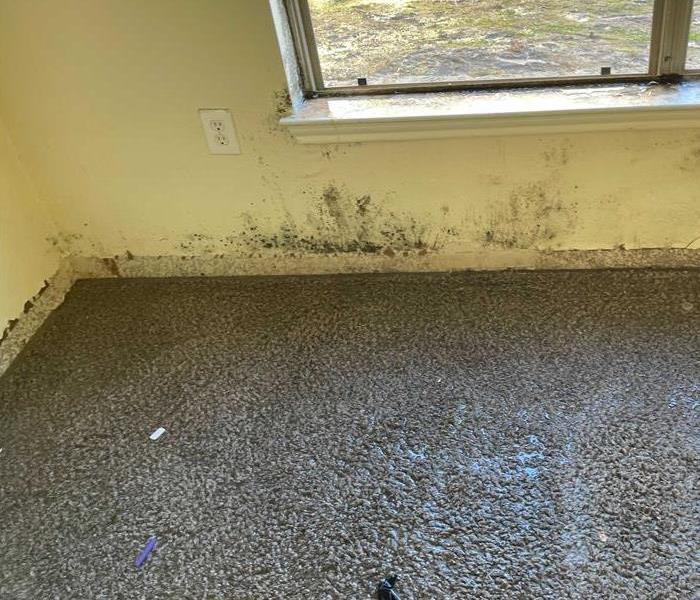 Call us at SERVPRO of Spring/ Tomball for more information about how you can stay safe during flood and storm situations 281-374-6454
Call us at SERVPRO of Spring/ Tomball for more information about how you can stay safe during flood and storm situations 281-374-6454
Floods can be surprising and they can catch you off guard. Water is incredibly damaging, and most people would be surprised at what water can do once it sneaks its way into your home. SERVPRO of Spring/ Tomball is here for you for suggestions and life saving tips.
Our crews are highly trained and licensed to work in these situations. It’s important to us to get out there and protect your property as quickly and professionally as possible, as we ensure the water will not migrate and cause additional damage to the surrounding areas.
Flooding can be dangerous and scary. Be sure to have emergency kits with you at all times in case of a storm.
If for any reason, you and your family are unable to make it out of your home or town when a storm is coming, there are ways to be Storm Ready.
Follow the steps below to feel better prepared when a storm hits:
1.) Have a home emergency plan. Know all of your safe exit points of the home, what to do with pets, keep on hand at least 2 Emergency Kits, and let your neighbors know you are still at the home.
2.) Stock up on the easy essential foods, water, toiletries, candles, lighters and flashlights. Have plenty of blankets and pillows handy.
3.) Keep some games and toys for the children handy--Waiting for the storm to pass over might actually get boring in some cases.
4.) Secure loose things around and on your property.
5.) Make sure there are no branches hanging over your home or garage.
6.) Stay in doors when the storm is upon you.
7.) Ensure your home, contents and car insurance is adequate and current.
8.) Learn how to safely turn off your power, water and gas.
9.) Keep a battery powered radio nearby so you can keep up with warnings and updates on the storm.
10.) Keep water containers, a camping stove and fuel safely on-hand
Stay safe and prepared for storms in your area.
Natural Disasters and the Texas Winter Storm
4/7/2021 (Permalink)
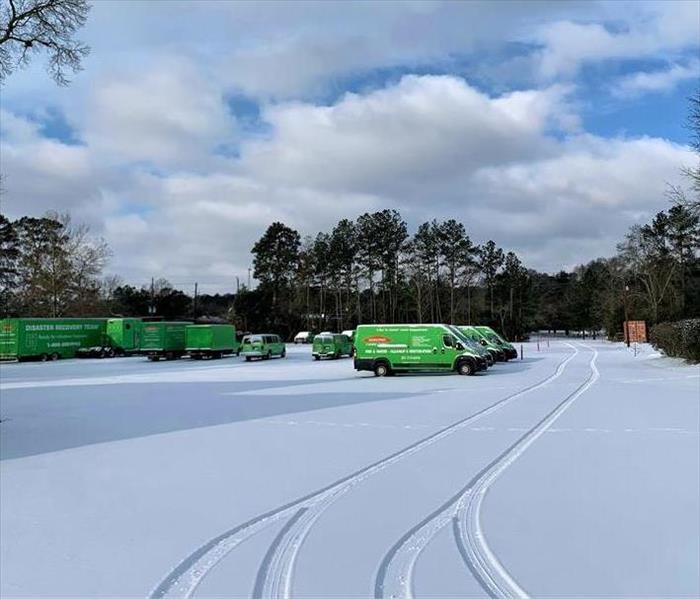 SERVPRO trucks ready to go out for Texas Winter Storm
SERVPRO trucks ready to go out for Texas Winter Storm
Last month’s winter storm was a real awakening for a lot of us out here in Texas. We are not new to natural disasters or having to rebuild our community, but the mass power outages and subfreezing temperatures was a crisis situation we weren’t prepared for.
Texas homeowners may be surprised to know that every state in the US is vulnerable to flooding--even the more arid ones. Changes in sea level, as well as weather patterns, are enough to create sudden floods that cause damage to homes and infrastructure in one fell swoop. Homeowners with flood coverage may be relieved to have it, but without professional cleanup, water damage can make their structures a host for mold, microbes, and further issues. Follow our guide for initial emergency water damage tips.
If you need flood damage cleanup, our storm team is ready and willing to rebuild your home to it’s original condition. As professionals, we receive the Institute of Inspection Cleaning and Restoration Certification (IICRC) training to maintain high standards in addressing fire, water, and mold damage as well as restoration of structures. Our team works with you and your insurance adjuster so that cleanup complies with your policy as well as local regulations.
Your insurance adjuster can assist you in the process of completing a proof of loss for your flood claim. Make sure your proof of loss complies with the needs of the Standard Flood Insurance Policy and file promptly--within 60 days of the flood--to make sure you get compensated in a timely fashion.
Our technicians can also assist with this process by taking photos of the damage, taking inventory of possessions, and coordinating with both you and your insurance adjuster during the cleanup process. If you have crucial documents that are damaged by flooding, we can create electronic copies of the papers so that you always have access to them.
A successful cleanup begins with thorough monitoring the situation. This is why our technicians use a variety of moisture measurement technologies to evaluate the extent of damage before extracting moisture, disinfecting surfaces, and drying your home. Throughout the drying process, professionals can use penetrating and non-penetrating moisture sensors and meters to determine the progress made by the cleanup process. Infrared imaging allows technicians to see behind structures to determine if subfloors, studs, or fiberglass insulation require further drying.
Every surface in your home has an ideal humidity level to maintain its integrity, from hardwood flooring to drywall to your furniture. Our team strives to ensure that items that can be safely restored are handled with the utmost care, and possessions that require replacement are not removed without documentation and the informed consent of homeowners and insurance adjusters. If your disaster requires general contracting services for restoration, your local SERVPRO is licensed to handle this type of work.
Check out The Weather Channel as they discuss why storms are so hard to forecast.
SERVPRO of Spring/Tomball provides a mitigation service that is Faster to Any Size Disaster. If disaster strikes in your home, you can call (512) 420-9886.
What Can I Do When a Storm Causes Flood Damage?
12/28/2020 (Permalink)
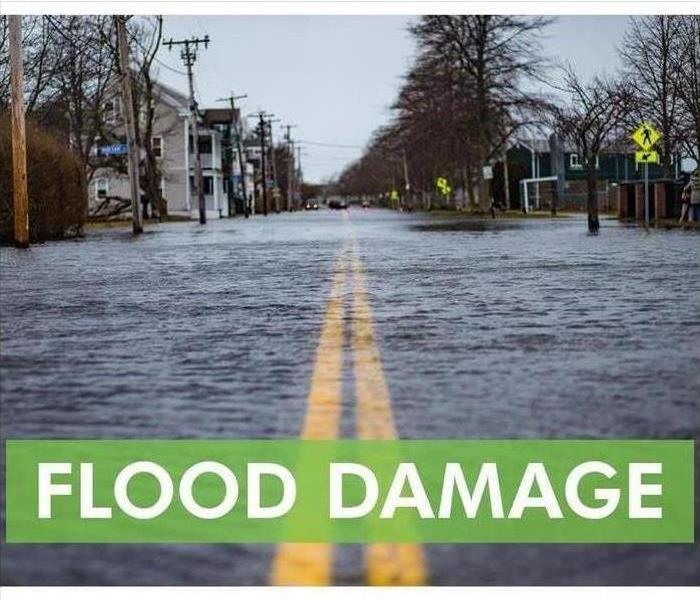 SERVPRO of Spring/Tomball is always here to help. Call our office 24/7 at (281) 374-6454
SERVPRO of Spring/Tomball is always here to help. Call our office 24/7 at (281) 374-6454
SERVPRO Can Remediate the Flood Damage in Your Houston, TX!
Living in Houston, TX can open your home to many heavy rainstorms. Unfortunately, if you live in an older building, this can cause some issues. Visualize an older roof, finally giving way under the weight of pooling water, and allowing it to leak into your home. You notice water begins to drip down into your bedroom from the ceiling.
Our flood damage remediation services for Houston and surrounding areas are expert-tier. SERVPRO technicians are well trained, and we use advanced technology to ensure the best service possible. If you need flood damage remediation, get in touch with us.
What Could I Do to Be More Prepared For a Flood?
If you know a severe rainstorm is on the way, you can do a few things to be prepared for the damage your home could face.
- Keep a list of emergency numbers
- Consider having spare water and food, in case of an extended power outage
- Consider calling for assistance, anticipate flooding risks
While not all rainstorms are severe or lead to electrical utility loss, it is always good to be prepared. Having bottled water and nonperishables handy can ensure you don’t need to rush to a grocery store when everyone else is. SERVPRO suggests contacting our office to set up a scheduled appointment for demonstrating our ERP Plan. The Emergency READY Profile Plan can help prevent, or at least mitigate, damages caused by intruding water, fires, or even mold.
What Can SERVPRO Techs Do Once They're Here?
Once our highly trained technicians get to your home, they can get to work right away. We can start by:
- Covering the hole on your roof with tarps, to try and stop water from getting inside
- Employ wet/dry vacuums to remove water from between your walls, your ceiling, and your bedroom floor
- Use air blasting tubes to get dry air into hard to reach places (injecti-dry advanced devices)
Here at SERVPRO, we are dedicated to helping you reduce excess moisture in your home and prevent mold damage. If you go through an unfortunate flood loss event, get the help your home deserves!
Get in touch with SERVPRO of Spring/Tomball by calling (281) 374-6454. We're here for you!
The 6 Step of Water Mitigation
8/12/2020 (Permalink)
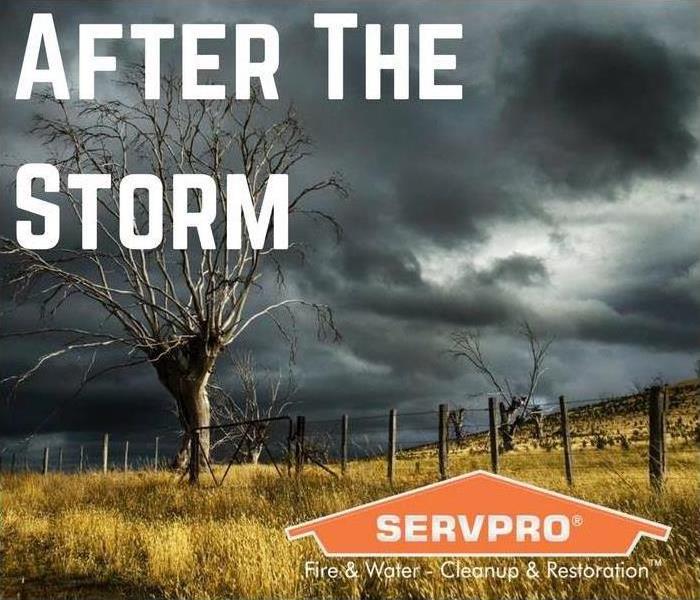 SERVPRO of Spring/Tomball is always here to help, give us a call at (281) 374-6454 if you have storm or water damage to your Houston, TX home.
SERVPRO of Spring/Tomball is always here to help, give us a call at (281) 374-6454 if you have storm or water damage to your Houston, TX home.
When your property incurs water damage, acting quickly is important
When you discover water damage, you can count on SERVPRO of Spring/Tomball's six-step restoration process to truly restore your property to its pre-damage condition.
6 Steps to Water Damage Restoration
- Initial Emergency Contact
- You can call us 24 hours a day to begin the water restoration process because taking immediate action is crucial after water damage occurs. When you call us, we will ask you questions to get an overview of the damage and to help us determine what resources to dispatch to you.
- Inspection and Damage Assessment
- When we arrive on the scene in response to water damage, we will do a detailed property inspection to assess the scope of the damage and to develop a thorough plan of action. We will identify the water source, the category of water, and check for safety concerns.
- Moisture Extraction
- The water extraction process will remove the majority of moisture via our vacuum and pump units. We will start this process as quickly as possible to lessen the likelihood of more damage occurring and to reduce drying time. We can also help you move out of your belongings in the event that they might be damaged as well.
- Dehumidifying and Drying
- After the excess water has been removed, we can begin fully drying all porous materials that have absorbed water. Our industrial-grade equipment moves air quickly and helps moisture to evaporate as fast as possible, which will dry out floors, walls, and carpets as well as discourage mold growth.
- Cleaning and Repair
- After sustaining water damage, impacted surfaces will typically require professional cleaning. In addition to structural cleaning, we will clean your belongings that are able to be restored. We will also do odor removal to prevent the musty odor that water-damaged objects often develop.
- Restoration
- The final step is ensuring that your property is restored to its pre-water condition. This will involve things like drywall and flooring repairs or even reconstruction. By working with us, you are working with a company that can handle all elements of the restoration, including the difficult reconstruction parts that truly restores things back to their pre-damaged state.
First Responder Flood Tips
6/19/2020 (Permalink)
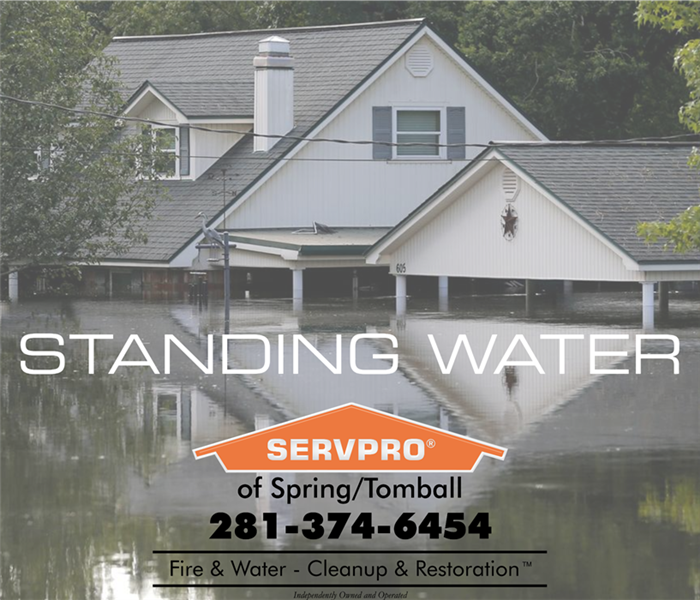 Call SERVPRO of Spring/Tomball at (281) 374-6454
Call SERVPRO of Spring/Tomball at (281) 374-6454
As a first responder, when a disaster happens your first inclination may be to rush out and help your neighbors in Houston, TX, and surrounding areas. In the case of severe flooding, extra steps need to be taken to ensure everyone’s safety and well-being.
Personal Preparation
Before heading into assisting with flood response, be sure to be up to date with immunizations. Current guidelines require the following:
- Tetanus, which requires a booster every 10 years
- Hepatitis B, which typically requires no booster except for special circumstances
What to Expect
Floods create an environment in which potential hazards could be around any corner. They can knock down power lines, pick up large debris as it flows, and cause sinkholes or unstable ground. Even using a generator or trying to drive to an area in a dire situation could result in negative consequences. Additional hazards to consider include, drowning, trees or limbs falling, carbon monoxide or chemical exposure, insects, rodents or insect infestations, injuries from lifting or falling, and hypothermia.
Protect Yourself to Help Others
As a trained first responder, you understand that you can only help if you keep safety a priority. During a disaster, the following can help make the challenging situation smoother during and after the storm:
- Wear protective clothing, boots, eye goggles, and gloves.
- Floodwaters can pick up chemicals, bacteria, and other contaminants, so it’s ideal to wear disposable clothes to avoid spreading contamination. Wash non-disposable clothes immediately after providing assistance.
- Flooding often results in the quick growth of mold and mildew. Wearing a certified mask can prevent breathing in spores and other particles.
- Wash hands thoroughly after touching any material or equipment that has been in contact with floodwaters.
While you may feel you are ready for anything as a first responder, your safety and that of those around you should also come first. Once everyone is safe, you can count on the experts to handle the cleanup!
Bad Odors Left Behind After Storm Damage
6/8/2020 (Permalink)
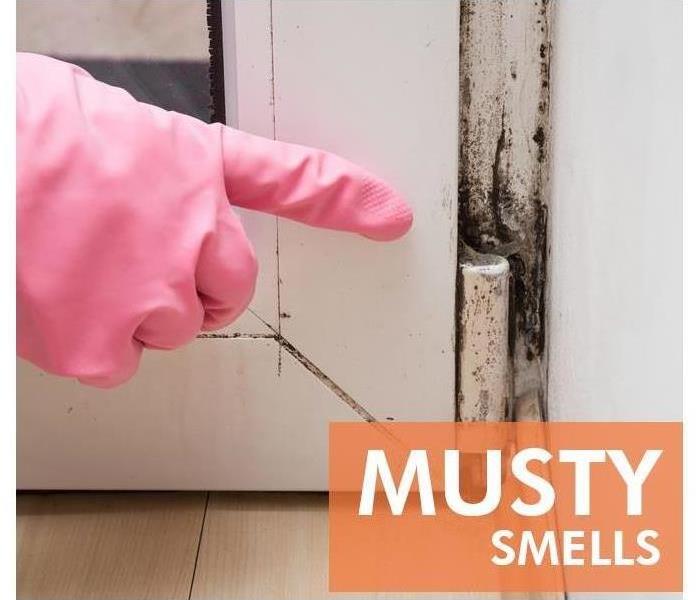 Call SERVPRO of Spring/Tomball if you experience storm damage. The longer the damage sits, the worse the odors get!
Call SERVPRO of Spring/Tomball if you experience storm damage. The longer the damage sits, the worse the odors get!
If your building floods during a storm in Houston, TX, and surrounding areas, your primary concern may be the damage caused to the building. The odor left behind can be an unpleasant side effect, though. Whether the smell is caused by mold growth or some other element, storm damage remediation experts can help you not only get rid of the floodwaters and the damage they caused, but also the funky stench that they brought along.
Possible Causes of Odor
Many different smells can assail your nose when you walk into your building after a storm. It may smell musty or rotten. There are many things that can cause bad odors when you have flood damage:
- Large patches of mold
- Sewage loss
- Bacteria growth
After technicians identify the source of the odor, they are better able to address the situation. They may use a series of tests and inspections to discover exactly where the foul stench originates.
Possible Solutions for Odor
If the problem causing the smell is mold growth, technicians will often start by taking care of it before they disinfect the rest of the space that has damage. Large infestations of mold have to be remediated by professionals to make sure that the area is safe and that all of the mold has been removed, otherwise, it is likely to return.
If your building has sewage, the whole area has to be disinfected to get rid of the microbes in the contaminated floodwater. Getting rid of the issue causing the smell is often just the first step, though. Air purifiers with HEPA filters or pre-filters with activated charcoal may be needed to filter odor-causing bacteria and spores out of the air.
Whether the odor in your commercial building is caused by mold growth, sewage or some other element, our certified technicians can help you get rid of it. If you are plagued by bad smells after a storm, it's a good idea to hire someone who can identify and remove the smell completely. Call SERVPRO of Spring/Tomball at (281) 374-6454.
Evacuation When Medical Supplies Are Needed
3/24/2020 (Permalink)
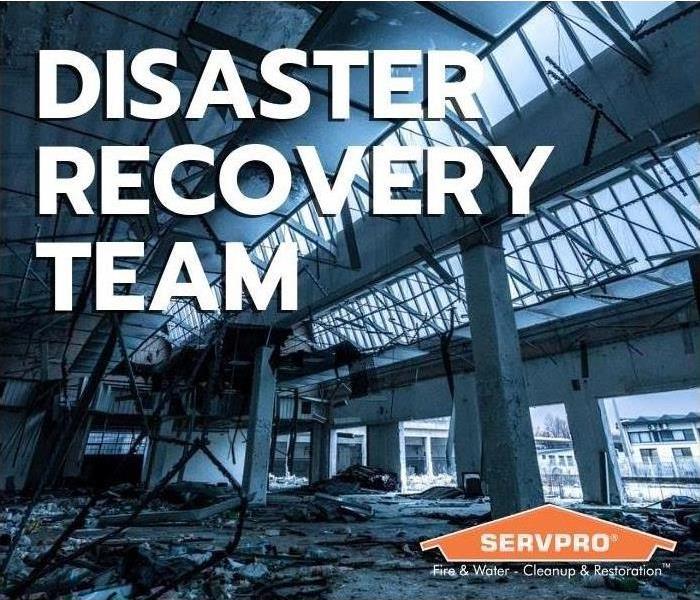 Think ahead of things you might need in the event you would need to evacuate your home unexpectedly due to storm damage.
Think ahead of things you might need in the event you would need to evacuate your home unexpectedly due to storm damage.
When a storm is headed your way, there are some items you can keep in a waterproof container (your emergency kit) to be prepared for possible evacuation. Medications are probably not one of them, but you can have them ready to bring with you.
SERVPRO® of Spring/Tomball suggests having these items prepared in the event you would need to evacuate your home:
- Copies of medical insurance & Medicare cards
- Warm blankets
- Extra clothing, especially socks & undergarments
- Bottled water
- Batteries for your electronic devices
- Written contact list
Some people in the Houston and surrounding areas will also need to consider the following:
- Make sure that at least one other person can get your medications & supplies
- Have at least a week-long supply of prescription medicines
- Have a list of all medications, dosages, and allergies
- Have an extra pair of glasses or extra contact lenses if needed
- Have extra hearing-aid batteries if needed
- Also, grab some games & activities for children to keep busy
If you have pets in the Houston or surrounding areas, consider these items:
- Pet food and a bowl
- Toys or comfort objects
- Vet information
Some shelters will not or cannot allow pets. Ahead of an emergency, find out which ones will allow your 4-legged loved ones. All shelters allow service animals.
Links:
https://www.fema.gov/
Roof Damage Can Cause Further Damage to Your Home Or Business!!
2/12/2020 (Permalink)
 Call SERVPRO of Spring/Tomball if you experience roof damage to your commercial or residential building. We are open 24/7/365!!!
Call SERVPRO of Spring/Tomball if you experience roof damage to your commercial or residential building. We are open 24/7/365!!!
3 Ways To Maintain Your Business's Roof
A roof leak or collapse can be devastating to a business, causing flooding and ruining merchandise. Roof damage, in fact, is a difficult situation, making reopening your store in Houston, TX, a hassle and expense. Avoiding this disaster isn't impossible, but steps can be taken to minimize the chances.
1. Attend to Small Problems Quickly
Don't assume your structure is intact simply because you can't see water stains. Wind damage and harsh rain can wear it down, causing tiny complications. Contact roofing specialists to conduct biannual evaluations, looking for any of the following issues:
- Peeled edges
- Cracked roofing
- Missing shingles
- Flashing issues
Leaving any of these unattended exposes the building to leaks and water damage. Fix things as soon as they come to your attention.
2. Tend To Drainage and Debris Early
Are your gutters clear? If they become clogged, backups happen, allowing water to build in areas it shouldn't. This pressure could add unneeded pressure to the top, essentially weighing it down. That collapse is not pretty. Have property management look at the gutter system regularly, scheduling cleanouts.
Trees and brush become an additional hazard. Roof damage often happens when limbs and branches are picked up during storms and then thrown into the roofing. Those smacks punch holes and remove the protective shingles. To avoid this, have someone trim the foliage and, before a major weather event, pick up anything loose on the ground.
3. Apply To Insurance Immediately
If you need help restoring the premises, contact a water restoration company to inspect the establishment, looking for mold and flooding complications. Their recommendation may indicate a roof rebuild is needed. Don't underestimate that decision. Work with your insurance company to discuss the need, giving you the comfort of a secure new ceiling. In fact, ask about waterproofing for the future. This sealant might aid in keeping leaks from sprouting up in the future.
Roof damage has preventative measures. By looking at it periodically, management might find the weak areas, offering a chance to stop a major catastrophe. In addition, don't forget that taking care of the landscaping may also ward off potential troubles. And in case of emergencies, don't forget to call SERVPRO of Spring/Tomball!
Thunderstorm Awareness!
12/27/2019 (Permalink)
Many people would say hurricanes, and tornadoes are much for dangerous than a thunderstorm. Unfortunately, that isn't true. Under the right conditions, rainfall from thunderstorms can cause flash flooding which kills more people each year than hurricanes, tornadoes or lightning.
What exactly is a thunderstorm? A thunderstorm is a normal rain shower with the addition of thunder, and since thunder is the result of lightning, all thunderstorms have lightning. Thunderstorms have caused millions of dollars in damages just with the basics like rain and lighting. Thunderstorms have caused power outages that have lasted weeks at a time.
Here at SERVPRO of Spring/Tomball, we take these matters very seriously and always have a protective eye on such storm moving in on our community. For any damages related to thunderstorms please contact SERVPRO of Spring/Tomball for our expert opinion. We are always prepared during times of flooding. We have 24-hour emergency services to make sure your home is back to "Like it never even happened".
Steps To Follow After A Storm
8/13/2019 (Permalink)
Your heart sinks and your mind races after a storm hits and damages your home. What should you do? Can you fix anything yourself? Should you start calling contractors? Help!
Below are some basic steps to follow after a storm strikes your home and causes damage.
Step One: Assess the Damage, call SERVPRO and Take Photos
After the storm has passed and it’s safe to venture outside, grab your camera or smartphone and start taking pictures and capturing video. Remember: Be safe. Downed power lines and high water can be deadly, and it’s not worth risking your life for photos that can be taken at a later, safer time. Call SERVPRO of Spring/Tomball to start the inspection to make sure your home gets repaired quick!
Step Two: Stop the Water
If water and wind are getting into your home, don’t stand around waiting for help, try to make temporary repairs. For example, cover broken windows with plywood or a tarp.
Step Three: Save Receipts, Stay Organized
Paperwork is crucial in the world of homeowners insurance. Staying organized now can alleviate headaches and problems later. Receipts are crucial to save as they can possibly be reimbursable.
Step Four: Call Your Insurance Company Soon and Often
Contact your insurance agency as soon as possible to file a claim. Make sure you know who your insurance adjustor is sending out so you don't have scammers knocking on your door. Disreputable contractors may show up unannounced at your doorstep promising to fix things. Have a conversation with your insurer before any work is done. Most of the time your insurer will tell you who’s showing up and when. Get everything you can in writing.
SERVPRO of Spring/Tomball will be at your doorstep as soon as possible to make sure your home gets back to "Like it never even happened."
Disaster Relief
6/18/2019 (Permalink)
After months of political battles, the U.S. House of Representatives passed a $19 billion disaster relief bill (H.R. 2157) in May of 2019, providing aid to areas hit by hurricanes, flooding, tornadoes, wildfires, and other natural disasters.
The disaster relief bill also includes a 4-month extension to the National Flood Insurance Program (NFIP), finally providing some extended security to the program, which has seen 12 short-term extensions since its original expiration date in September 2017.
The bill passed the House with a vote of 354-58. The Senate previously passed the bill on May 23. It now goes to the White House. President Donald Trump has indicated he will sign the bill.
The $19 billion will fund a number of federal programs that provide aid and rebuilding assistance to local communities, farmers, service members and others nationwide.
Breaking down the $19 billion, $900 million has been allocated for aid in Puerto Rico, where Cat-5 Hurricane Maria devastated the U.S. territory in 2017, killing an estimated 3,057 people. The bill also will aid flood victims in the Midwest, particularly farmers who are being stifled by months of relentless inclement weather and fallout from the President’s recent trade tariffs.
Wildfire victims and programs in California will see long-awaited relief, too. The bill contains $2.4 billion for community development block grants to address disasters that have occurred since 2017; $3 billion for the Agriculture Department to cover producers’ losses from those disasters; and $720 million for the Forest Service to repay money spent fighting last year’s wildfires.
"Why should I have flood insurance?"
6/5/2019 (Permalink)
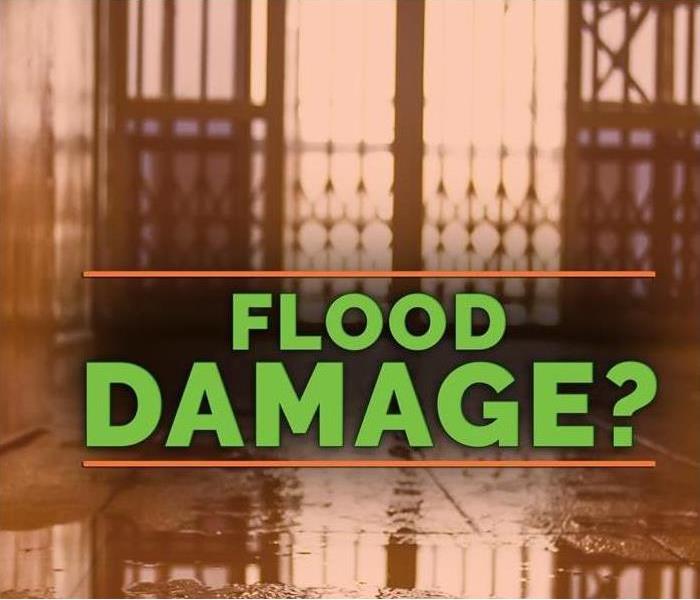
According to the National Flood Insurance Program (NFIP), flooding is the most common natural disaster in the United States, affecting every single state. While hurricanes are mostly responsible for massive flooding catastrophes, other causes of flooding include snowmelt, heavy rain, dams or levees breaking, and new developments impacting water flow. In the past couple of years, many homes that were not in high-risk flood zones experienced flooding simply due to heavy rainfall. In case you didn’t know, your homeowner’s policy will not cover damages caused by flooding. So, purchasing a flood insurance policy is a wise idea even if your home is not located in areas that are more common to flood. Just one inch of flood water in your home can cost thousands of dollars. Flood water is contaminated water and, according to industry cleaning standards, every material affected by flood water must be removed and discarded. Imagine if a few inches of flood water entered your home. Now imagine needing to replace your flooring, sheetrock, cabinets, furniture, clothes, electronics, etc. How much do you think this would cost you? Purchasing a flood insurance policy will save you time and money, helping you and your family recover faster. Well, what do you need to know about flood insurance before speaking to your insurance agent? Below are a few facts about flood insurance and helpful tips to make you a more informed insured.
When should I purchase a flood insurance policy?
Do not wait for hurricane season to purchase a flood insurance policy. The average flood insurance policy takes 30 days to become active. However, according to the Federal Emergency Management Agency, a policy may go into effect sooner:
- If your building is newly designated in a high-risk Special Flood Hazard Area, and you buy flood insurance within the 13-month period following a map revision: One-day waiting period.
- If you buy flood insurance in connection with making, increasing, extending or renewing your mortgage loan: No waiting period.
- If you select additional insurance as an option on your flood insurance policy renewal bill: No waiting period.
- If your property is affected by flooding on burned federal land, and the policy is purchased within 60 days of the fire-containment: Possible waiver of the waiting period.”
But, for the most part, damages from flooding will only be covered after the thirty day wait period. Now is the best time to purchase a policy.
What is covered by a flood insurance policy?
Flood insurance is available to homeowners, business owners, and renters. For homeowners, your flood insurance policy will offer up to $250,000 for repairing the home itself and offer up to $100,000 for replacing personal items and your home’s contents. Business owner policies will offer up to $500,000 for building repairs and $500,000 in building contents. Renters can purchase policies covering up to $100,000 of personal contents.
According to FEMA:
“Building coverage includes:
- The insured building and its foundation;
- The electrical and plumbing system;
- Central air conditioning equipment, furnaces, and water heaters;
- Refrigerators, cooking stoves, and built-in appliances such as dishwashers; and
- Permanently installed carpeting over unfinished flooring.
Contents coverage includes:
- Clothing, curtains, furniture and electronic equipment;
- Portable items such as; window air conditioners, microwaves and dishwashers; and
- Carpeting that is not already included in property coverage.”
Policy prices will differ based upon deductible, the extent of coverages, flood risk, year of building construction, and other factors. The flood insurance market is evolving. Private insurance companies are beginning to offer flood insurance policies now. Speak with your insurance agent to see if you could benefit from purchasing a private flood insurance policy.
How do I purchase a flood insurance policy?
Speak with your insurance agent to learn more about the National Flood Insurance Program and private insurance policies. They should help you to understand which options are best suited for your home and/or business. If your agent does not sell flood insurance, contact the NFIP Referral Call Center at 800-427-4661 for a referral.
What do I do after a flood?
If your home or business has been damaged by flood waters, then please do not enter the property until it is safe to do so. Once you can access your property again, start with contacting your insurance company to file a claim. Then, you can begin to inventory damaged items. Take photographs of everything and write down each item’s purchase date and estimated value. This home inventory list will need to be submitted to your adjuster. Make sure to reach out to SERVPRO as soon as possible to ensure that your home gets cleaned up and back to preloss condition. Also, remember to take notes of your conversations with your insurance company and the adjuster. Jot down the date and time of each interaction, as well as specific notes about what was discussed.
If you do not have a flood insurance policy and your home or business has been damaged due to flooding, then you will be financially responsible for necessary repairs and restoration services. Only if a flooding incident has been declared a national disaster by the president will FEMA assistance become available. This assistance is usually in the form of a grant or low-interest disaster loan that you are required to repay.
The recovery process following flooding disasters is long and emotional. SERVPRO of Spring/Tomball understands the stress and worry you will feel after your home has incurred damages. As your neighbors and your friends, we offer our expertise, guidance, and 24-hour emergency restoration services for those in need of disaster recovery. For questions or to receive assistance please contact our office by dialing 281-374-8172.
For more information about the National Flood Insurance Program or what to do before, during or after a flood you can visit:
https://www.floodsmart.gov/how/what-to-know-before-buying-a-flood-insurance-policy
https://www.floodsmart.gov/
https://www.iii.org/article/facts-about-flood-insurance
https://www.fema.gov/disaster/4310-4313/updates/facts-and-myths-about-flood-insurance
https://www.disasterassistance.gov/
HURRICANE SEASON IS HERE!!
6/3/2019 (Permalink)
Hurricane Season is here and will be until around Early November as expected.
Let's talk FACTS: Most Hurricanes rage harmlessly in the sea without ever making landfall--but when they do you should be SERVPRO Ready!
Hurricanes cause billions of dollars worth of destruction EVERY YEAR. They can cause over 11,000 deaths, over 231 hurricane landfills absorbing homes, your local coffee shop and even a mall.
Be prepared! Here are some safety tips during Hurricane Season:
1.) Stay Indoors
2.) Unplug Appliances
3.) Get a battery operated radio to listen to updates on the weather
4.) Have a first aid kit handy
5.) Stay together as a community, because there is nothing more powerful than a community that rebuilds together!
If flood waters reach into your home do as much as you can to either keep it out or get it out! Standing water is bad water!
Stay safe, and watch the weather!
Are Your Prepared For An Unexpected Storm?
5/24/2019 (Permalink)
Storms occur with little warning and can be especially devastating, so you’ll need the company that you can trust to rise to the occasion - SERVPRO of Spring/Tomball is THAT company. We are a turnkey operation, meaning that we DO IT ALL from start to finish! Regardless of the type of storm, SERVPRO Franchise Professionals can handle any size disaster, residential or commercial. During catastrophic storms and major events, our Disaster Recovery Team can respond quickly with additional resources.
- Flooding caused by heavy rains
- Hurricanes and tidal surges
- Tornadoes and wind damage
- Ice and Snowstorms
- Wildfires
IMMEDIATE Steps to be Taken After Storm Damage!!
4/25/2019 (Permalink)
Storm damage can occur at any time and can cause an immense amount of harm to your home. Heavy rains can cause flooding and powerful winds can cause roof damage and downed trees on your property. Some post-storm damage can create safety and health hazards as well, so having a strategy to deal with damage will help you to be ready to take steps immediately after the storm.
Take Safety Precautions
Heavy winds and rain can create physical hazards such as collapsed roofing materials, window damage, collapsed walls or standing water in the basement or home interior. In addition, moisture can soak into furniture, carpeting, and building materials making the perfect environment for mold growth that can cause health issues. Shut off the main gas line if you smell gas. Beware of broken glass, exposed nails, and other sharp objects on the property. Contact SERVPRO of Spring/Tomball at (281) 374-6454 to extract the water and repair your home. We even have climate controlled storage units for your belongings!
Contact Your Insurance Company
Contact your insurance agent to notify them about the damage to your home immediately. The company will send out an adjuster to determine the extent of the damage so that payment for repairs can be made.
Contact A Restoration Company
At SERVPRO of Spring/Tomball, we specialize in mitigation and restoration. We have crews on call 24/7/365 and we will come out to your home or business immediately! Call us today at (281) 374-6454.
When a storm-related disaster strikes, it may seem overwhelming, but these steps can help you to begin the process of restoring your home, and your life, to normal. At SERVPRO of Spring/Tomball, we provide 24-hour emergency disaster service. We specialize in the mitigation and restoration of homes and businesses that have suffered small or large loss from water, flooding, wind, storm, fire damage, and smoke disaster.
Be Prepared for Storms
3/1/2019 (Permalink)
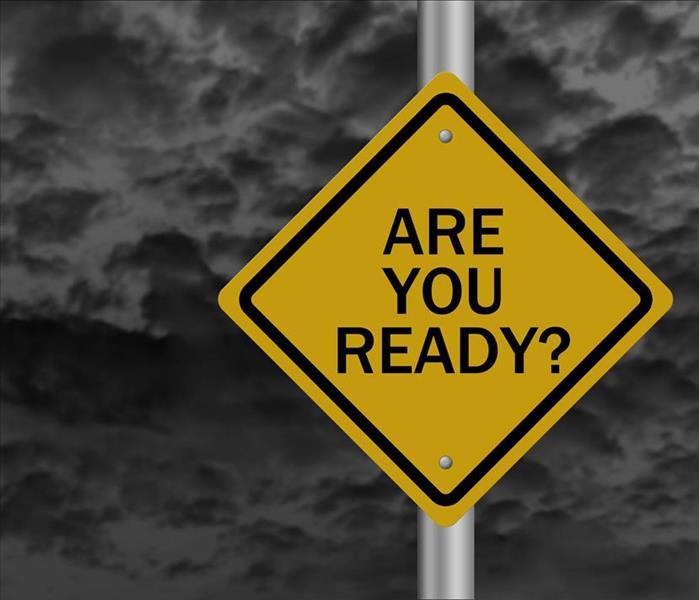 Call SERVPRO of Spring/Tomball at (281)374-6454. We are here to help YOU 24/7, 365 days a year!
Call SERVPRO of Spring/Tomball at (281)374-6454. We are here to help YOU 24/7, 365 days a year!
You may need to survive on your own after an emergency. This means having your own food, water, and other supplies in sufficient quantity to last for at least 72 hours. Local officials and relief workers will be on the scene after a disaster but they cannot reach everyone immediately. You could get help in hours, or it might take days. Depending on the nature of the disaster, road conditions may prevent help from arriving in a timely manner.
Additionally, basic services such as electricity, gas, water, sewage treatment, and telephones may be cut off for days or even weeks. You should prepare a supplies kit that should contain items to help you manage during these outages.
Be prepared for a power outage by keeping necessary items centrally located in your home. Take the time to ensure that everyone in your family is aware of the "kit." Periodically check your kit to see that batteries operate properly. The following is a list of items that are suggested to keep on hand:
1. Flashlights for each family member
2. Battery-operated radio and clock
3. Extra batteries
4. Containers of bottled water
5. Canned, freeze-dried or dehydrated food, powdered milk, baby supplies for infants
6. Non-electric can opener
7. List of important phone numbers
8. First-aid kit
Following a disaster, there may be power outages that could last for several days. Stock canned foods, dry mixes and other staples that do not require refrigeration, cooking, water or special preparation. Be sure to include a manual can opener and eating utensils. The following items are suggested when selecting emergency food supplies, you may already have many of these on hand.
•Store at least a three-day supply of non-perishable food.
•Choose foods your family will eat.
•Remember any special dietary needs.
•Avoid foods that will make you thirsty.
•Choose salt-free crackers, whole grain cereals and canned foods with high liquid content.
•Ready-to-eat canned meats, fruits, vegetables, and a can opener
•Protein or fruit bars
•Dry cereal or granola
•Peanut butter
•Dried fruit
•Nuts
•Crackers
•Canned juices
•Non-perishable pasteurized milk
•High energy foods
•Vitamins
•Food for infants
•Comfort/stress foods
Always be prepared for the worst! Once the storm passes, SERVPRO of Spring/Tomball will be there immediately to assist you in any way that we possibly can.
When Storms or Floods hit, SERVPRO of Spring/Tomball is ready!
1/23/2019 (Permalink)
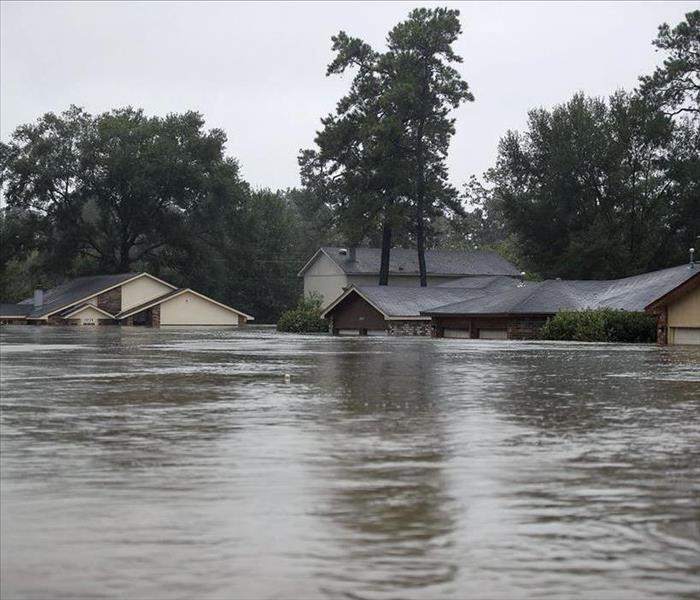 Our highly trained crews are ready to respond 24/7 to storm or flood damage!
Our highly trained crews are ready to respond 24/7 to storm or flood damage!
SERVPRO of Spring/Tomball specializes in storm and flood damage restoration. Our crews are highly trained and we use specialized equipment to restore your property to its pre-storm condition.
Since we are locally owned and operated, we are able to respond quickly with the right resources, which is extremely important. A fast response lessens the damage, limits further damage, and reduces the restoration cost.
Resources to Handle Floods and Storms
When storms hit, we can scale our resources to handle a large storm or flooding disaster. We can access equipment and personnel from a network of 1,650 Franchises across the country and elite Disaster Recovery Teams that are strategically located throughout the United States.
Have Storm or Flood Damage? Call SERVPRO of Spring/Tomball Today at (281)374-6454
JANUARY FREE CE CLASS!
12/26/2018 (Permalink)
Are you in need of CE Credit Hours?
LUCKILY we host Continuing Education Courses every month right here at our facility! Each course is taught by either the Owners of our Franchise or one of our Production Managers.
Join us on January 17th, for our FREE CE Class-- this courses will cover: Fire & Smoke Damage Restoration 9am-1pm.
All classes are free of charge and include drinks and light snacks. We handle all of the paperwork and get your certificate out to you as soon as possible. If you would like to RSVP please contact us at the information provided below.
Please contact Makenna McNulty (marketing representative) at the information below if you have any questions regarding the CE Classes or if you are interested in sending an RSVP:
Email: smr@SERVPROspringtomball.com
Cell: 281-804-8172
OR
Jack Goodroe (HR Generalist)
Email: jack.goodroe@SERVPROspringtomball.com
Phone: 281-374-6454
Storm Tips and Guidelines
10/22/2018 (Permalink)
Follow these tips to help you be prepared for a storm and to keep you safe during a storm.
- Always keep a battery-powered radio in your home so that you can tune to radio stations if you lose electricity. Check and change the batteries frequently.
- Keep a flashlight in an easily accessible spot on every floor of your home. Check the batteries monthly, and replace them as needed.
- Keep a supply of candles on hand for power failures.
- As a safety precaution before leaving the house on vacation, unplug all electrical appliances except for those lights connected to automatic timers.
- If you live in a storm-prone area, nail down roof shingles or use adequate adhesive to keep them from blowing off in a violent wind.
- Don't go out during a hurricane unless you have to; however, if flooding threatens, seek high ground, and follow the instructions of civil defense personnel.
- When a major storm is imminent, close shutters, board windows, or tape the inside of larger panes with an "X" along the full length of their diagonals. Even a light material like masking tape may give the glass the extra margin of strength it needs to resist cracking.
Storm tips for Pets
8/8/2018 (Permalink)
How do you handle dog fear and anxiety related to storms?
Here are eight tips to calm your dog during a storm:
Stay home with your Dog
For a dog who already fears thunderstorms, being alone will only worsen the anxiety. If bad weather is in the forecast, try to be home or have someone stay with your dog during the storm.
Create Calmness
Give your dog the comfort and attention she/he needs to calm her anxiety. An anxious dog is unable to learn due to being overly stimulated and emotional, which means comforting is not rewarding the fear. Try a calming massage to help your dog relax during the storm.
Provide Distractions
If a dog is punished or ignored during a frightening event, it’s likely to worsen the anxiety. Instead, offer a positive stimulus, such as gentle petting, to distract and calm your dog. If your dog will still engage, try a game of indoor fetch, tug, or offer a high-value chew.
Offer a Safe Place
Place your dog’s crate and/or bed in the most sound-proof room of your home. A crate is a natural, psychological defense for dogs and can have an incredible influence on their comfort level. It’s also helpful to close the blinds to shelter your dog from the visual stimulation of a storm.
Hurricane Season is here!!!
6/1/2018 (Permalink)
Hurricane Season is here and will be until around Early November as expected.
Let's talk FACTS: Most Hurricanes rage harmlessly in the sea without ever making landfall--but when they do you should be SERVPRO Ready!
Hurricanes cause billions of dollars worth of destruction EVERY YEAR. They can cause over 11,000 deaths, over 231 hurricane landfills absorbing homes, your local coffee shop and even a mall.
Be prepared! Here are some safety tips during Hurricane Season:
1.) Stay Indoors
2.) Unplug Appliances
3.) Get a battery operated radio to listen to updates on the weather
4.) Have a first aid kit handy
5.) Stay together as a community, because there is nothing more powerful than a community that rebuilds together!
If flood waters reach into your home do as much as you can to either keep it out or get it out! Standing water, is bad water!
Stay safe, and watch the weather!
Storm Safety Kit!
5/8/2018 (Permalink)
This spring there's already been a spate of severe weather and there'll likely be more to come as May is the peak season for tornadoes and June is the start of the hurricane season. So it's time to get packing, or updating, your to-go kit.
Below is a basic kit that last three days, but you should tailor yours to your family's needs, especially if you have small children.
- One gallon of water per person per day, for drinking and sanitation
- Non-perishable food and a manual can opener
- A battery-powered or hand crank radio and a NOAA weather radio with tone alert and extra batteries
- Flashlight and extra batteries
- First aid kit
- Whistle to signal for help
- Filter mask or cotton t-shirt, to help filter the air
- Moist towelettes, garbage bags and plastic ties for personal sanitation
- Wrench or pliers to turn off utilities
- Plastic sheeting and duct tape to shelter-in-place
- Important family documents in a waterproof container
- Items for unique family needs, such as daily prescription medications, infant formula or diapers
We want everyone to stay safe during this Hurricane Season!!
Are you prepared for a flood?
4/25/2018 (Permalink)
You can prepare for flooding in a number of ways!
- Prepare a few emergency kits
- Prepare a household flood plan
- Keep a list of emergency telephone numbers
- Check your insurance policy to see if you are covered for flood damage
If flooding is predicted, make your safety a priority and if you have time try to prepare your property:
- Secure hazardous items
- Roll up rugs, move furniture, electrical items and valuables to a higher level
- Place important personal documents, valuables and vital medical supplies into a waterproof case in an accessible location
- If you are relocating, take your pets with you if it is safe to do so. If not provide adequate food and water and move them to a safer place
Relocating to safer ground:
If rising waters threaten your home and you decide to move to a safer location, tell the police, your nearest State Emergency Service (SES) unit or your neighbors of your plans to move.
- Monitor your local radio for warnings and advice
- Pack warm clothing, essential medication, valuables and personal papers in waterproof bags along with your emergency kits.
- Raise furniture, clothing and valuables onto beds, tables and into roof space place
- Empty freezers and refrigerators, leaving doors open to avoid damage or loss if they float.
- Turn off power, water and gas and take your mobile phone
- Whether you leave or stay, put sand bags in the toilet bowl and over all laundry/bathroom drain holes to prevent sewage backflow
- Lock your home and take recommended relocation routes for your area
- Do not drive into water of unknown depth and current
Too late to leave?
- Monitor your local radio for warnings
- Get to higher ground
- Switch off electricity and gas supplies to your home
- Prepare to move vehicles, outdoor equipment, garbage, chemical and poisons to higher locations
- Prepare for the well being of pets
- Raise furniture above likely flood levels
- Check your emergency kits
- Do not allow children to play in or near floodwaters
- Avoid entering floodwaters,. if you must do so, wear solid shoes and check depth and current with a stick
- Stay away from drains, culverts and water over knee deep.
- Do not use gas or electrical appliances that have been in floodwater until checked for safety
- Do not eat food that has been in floodwaters
What to do if there is a Tornado Warning!
4/17/2018 (Permalink)
With these storms we've had latley, it's always good to know what to do in case there is a tornado around you.
4 Tip below on what to do if there is a Tornado warning in your area!
1. Figure out a safe place to ride out the storm
Do you live in a mobile home? If so, get somewhere safer. Driving in a car? Get home as quickly as you can, and if that's not possible, get to a sturdy building and take shelter.
2. Get away from windows
Regardless of where you're hunkering down, it should be as far away from windows as possible.
3. If a tornado appears while you're on the road...
You should make every effort to find a safe building for shelter. If you can't find one, NEVER hide under an overpass. Instead, find a ditch, get down and cover your head.
4. Don't leave your home and try to drive away from a tornado
Tornadoes can shift their path, and even if you think you're directly in the line of the storm, being inside shelter is safer than being inside a car.
10 Tips to be Storm Ready
12/19/2017 (Permalink)
 SERVPRO® of Spring/Tomball Please Call 281-374-6454
SERVPRO® of Spring/Tomball Please Call 281-374-6454
If for any reason or chance, you and your family are unable to make it out of your home or town when a storm is coming, there are ways to feel and be Storm Ready. Follow the steps below to feel better prepared when a storm hits:
1.) Have a home emergency plan.
-Know all of your safe exit points of the home.
-What to do with pets.
-Keep on hand at least 2 Emergency Kits.
-Let your neighbors know you are still at the home.
2.) Stock up on the easy essential foods, water, toiletries, candles, lighters and flashlights.
-Have plenty of blankets and pillows handy.
3.) Keep some games and toys for the children handy--Waiting for the storm to pass over might actually get boring in some cases.
4.) Secure loose things around and on your property.
5.) Make sure there are no branches hanging over your home or garage.
6.) Stay in doors when the storm is upon you.
7.) Ensure your home, contents and car insurance is adequate and current.
8.) Learn how to safely turn off your power, water and gas.
9.) Keep a battery powered radio nearby so you can keep up with warnings and updates on the storm.
10.) Keep water containers, a camping stove and fuel safely on-hand
Stay safe and be somewhat prepared for when a storm hits with these safety and life tips.
TEXAS STRONG, COME HELL OR HIGH WATER!!
10/27/2017 (Permalink)
 Stay Texas Strong.
Stay Texas Strong.
This hurricane season has been a rough one. People, families, children, business owners..etc..have lost homes,vehicles and business all across Texas.
During times like these, we truly begin to see the love of a community, friends and family come together and REBUILD. And yes, we will REBUILD!!!! Hurricane Harvey was a disaster that affected so many lives, and it will never be forgotten. As we took in calls about flooded homes and no way to get to them, it was devastating hearing their stories. It's in times like these that SERVPRO's all over will band together and get out to those homes and businesses and begin work when nobody else can.
As we look around us and see all of the fundraisers, and groups coming together in our communities to help one another, it is truly amazing. It helps us to remember that in bad situations and disasters such as Hurricane Harvey and Hurricane Irma, there is still so much good throughout our communities.
Let us all continue all of the hard work and efforts to rebuild our State. TEXAS STRONG, COME HELL OR HIGH WATER!!!!!!!
Flooding Hazard!
8/8/2017 (Permalink)
 SERVPRO® of Spring/Tomball Please Call 281-374-6454
SERVPRO® of Spring/Tomball Please Call 281-374-6454
April Floods 2016-Tomball Regional, Tomball TX
Floods can be surprising. They can catch you off guard as to how bad they can get. You would be so surprised at what water can sneak its way into and through.
The disaster that our local Hospital faced in April of 2016. With over 8,000 square foot of the radiology department affected--this includes over 12 hallways and 67 rooms that were affected.
Being sure that we have the equipment, and the hands for work this big is very important to us. Our crews know the situation and get out there and get the work done as professional and quickly as possible while staying very meticulous.
Flooding can be dangerous and scary. Be sure to have emergency kits with you at all times in case of a storm.
HURRICANE SEASON IS HERE!!!!
6/27/2017 (Permalink)
Hurricane Season is here and will be until around Early November as expected.
Let's talk FACTS: Most Hurricanes rage harmlessly in the sea without ever making landfall--but when they do you should be SERVPRO Ready!
Hurricanes cause billions of dollars worth of destruction EVERY YEAR. They can cause over 11,000 deaths, over 231 hurricane landfills absorbing homes, your local coffee shop and even a mall.
Be prepared! Here are some safety tips during Hurricane Season:
1.) Stay Indoors
2.) Unplug Appliances
3.) Get a battery operated radio to listen to updates on the weather
4.) Have a first aid kit handy
5.) Stay together as a community, because there is nothing more powerful than a community that rebuilds together!
If flood waters reach into your home do as much as you can to either keep it out or get it out! Standing water, is bad water!
Stay safe, and watch the weather!






 24/7 Emergency Service
24/7 Emergency Service












